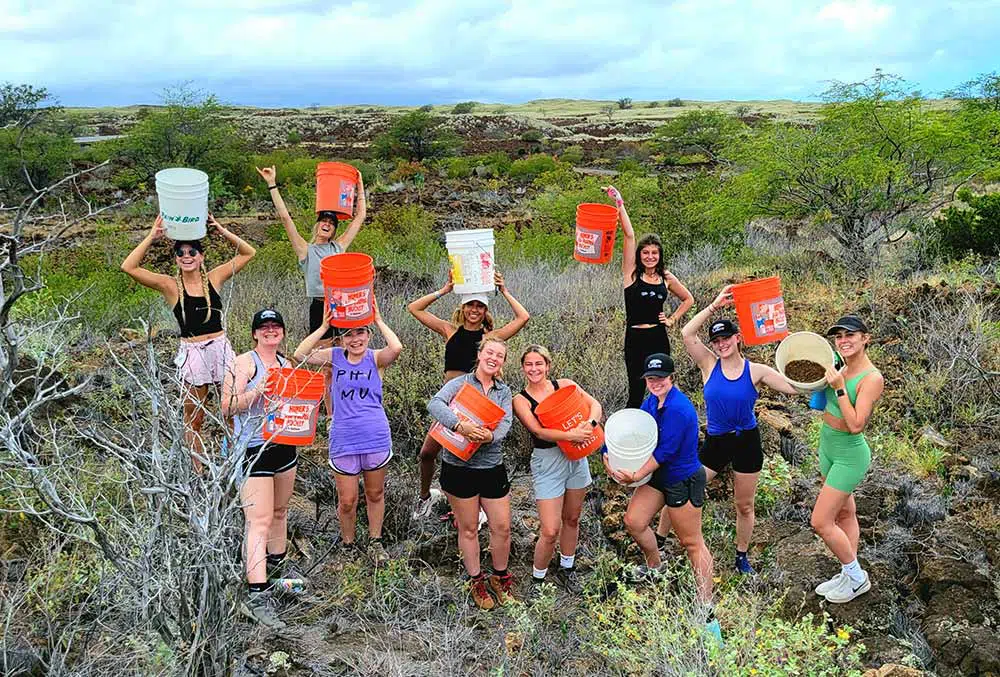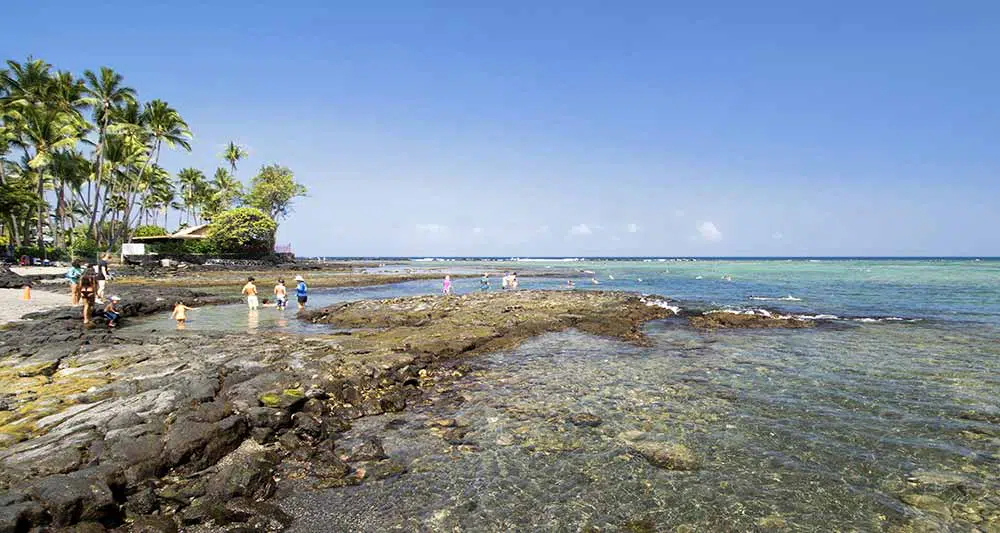Jul 27, 2021
Opportunities – On Land and Sea

We’ve been talking a lot about “Mālama Hawai‘i,” the new initiative from Hawai‘i Tourism Authority that is about so much more than tourism. It’s kind of an education program, focused on the values of caring for natural and cultural resources, as well as personal safety. With that, we’ve emphasized the concept of kuleana, responsibility, for the land, waters, wildlife and other human beings on Hawai‘i Island.
If you’re already a Hawai‘i homeowner or you’re seriously considering it, you are or will be a part of the community, and we welcome you. We welcome you to join in our efforts to “mālama” our island home, to learn, socialize, give back (or pay forward), and come away with feelings of accomplishment and good will.
If you’re like us, the word “volunteer” conjures up images of boring, unrewarding work that nobody else wants to do. That’s why we call these OPPORTUNITIES, and there are countless ways to get involved. Take a look at a few examples and see which ones might appeal to you and your family’s interests.
Tree Huggers
Amy B.H. Greenwell Ethnobotanical Garden is home to more than 200 species of endemic, indigenous and Polynesian-introducted flora. The Garden welcomes volunteers every Saturday morning from 9 a.m. to 12 p.m., who get together to pull weeds and tend the various botanical collections. But you don’t have to put your hands in the dirt to help out. They also need people for data entry and office organization, machinery maintenance, and more. Email the volunteer coordinator at [email protected], or call 808-323-3318.
Hawaiian Legacy Reforestation Initiative is a unique way to help the forest, and to share the experience with family and friends. For a $90-100 donation, you can give the gift of a living legacy by sponsoring an endemic “Legacy Tree” (Koa, Sandalwood, Milo or Ohia Lehua). These funds help support collecting seeds (by hand), raising your seeding in the nursery, planting your tree to create a forest, fencing out pests, and clearing invasive species. And each tree adopter receives a tracking number to follow your tree’s progress. Their website contains a wealth of information about Hawaii’s unique trees and forest life.
Mauna Kea Forest Restoration Project has 20,000 native seedlings of Koa, Māmane, and ‘Ili‘ahi to plant, from September-November 2021. These trees help bring back endemic Hawaiian birdlife, especially the palila, on the slopes of Mauna Kea. If you have a 4WD vehicle, please sign up online, select your preferred date(s), and plan on a full day of satisfying work and meeting new friends.
Uluhaʻo o Hualālai is an historic property stewarded since the 1950s by the family of Kimo Duarte. Tour journeys through native forests of koa and ʻōhiʻa – home of native birds such as ʻapapane, ʻakepa, ʻiʻiwi, and palila. The 4WD tour and moderate hike around the summit craters is educational and spectacular, enriched by personal histories and sensory experience. The day concludes with planting a koa sapling to help restoration efforts on Hualālai.
Waikoloa Dry Land Forest Initiative welcomes volunteers on the second and fourth Saturday of every month, from 9 a.m. to 12 noon, with an optional potluck lunch. This unique lowland forest is home to numerous native dryland plants, and features the endangered wiliwili tree, once used for canoe outriggers and surfboards. The volunteer group helps rehabilitate the native ecosystem, build trails, clear weeds, plant trees, collect native seeds, and propogate plants that will grow into future forests. Sign up to volunteer here: https://www.waikoloadryforest.org/malama-aina-volunteer/
Ocean Lovers
The Sanctuary Ocean Count is a project of the Hawaiian Island Humpback Whale National Marine Sanctuary. A fun activity for everyone, all that’s required is the ability to count, take notes, and a pair of binoculars if you have them. You may also enjoy meeting fellow whale-watchers and learning more about Hawaii’s biggest visitors. Volunteers go to their designated sites, all around the island, on the last Saturday of January, February, and March every year, from 8 a.m. to 12:15 p.m. Participants tally humpback whale sightings and document the animals’ surface behavior, also noting any other species observed during the count. Register online or email [email protected].
808 Cleanups was established in 2014 to tackle a variety of issues with volunteer hands, hearts and energy. In various ways all across the state, they work to clean up beaches, delete grafitti, remove invasive plants, and protect the coral reefs. Participants can sign up to join a group, or take the Adopt A Site option to care for your favorite beach or other special place. 808 Cleanups can help with supplies, communications and more. To get started, download the 808 Cleanups app, or email [email protected].

Kahalu‘u Bay Education Center is an all-volunteer effort to teach ocean/reef safety and responsible swimming to the 400,000 park visitors every year. (You may have heard about them earlier this year when the Kahalu‘u Beach Park was closed for coral spawning.) Extra hands, and voices, are always needed for their reef education, citizen science, and tidepool investigation programs. You can register to volunteer online or contact Kathleen Clark at [email protected] or 808-887-6411.
Ocean Defenders are divers, boat owners and dedicated on- and offshore volunteers who are quite serious about large marine debris such as fishing nets, lines and other gear. Partnering with commercial dive boats, the Ocean Defenders team regularly goes out to collect harmful debris at sea, sort, document, and properly dispose of it. They also do beach cleanups, education outreach and a variety of fundraising projects. Experienced divers are always needed, but there are numerous other wayts to help. And if you see debris in the ocean, please report it here: https://www.oceandefenders.org/get-involved/report-debris.html
Of course this is just a small sample of ways that Hawai‘i Islands new homeowners can more quickly become part of their community by helping take care of our island home. There are many more. Schools, performing arts venues and groups, hospitals, churches, cultural and service organizations would love to have you (and your family where appropriate) join their volunteer ‘ohana. So, don’t be shy; just about everybody here was a malihini (newcomer) once. Come and enjoy!




